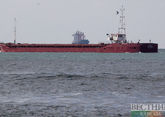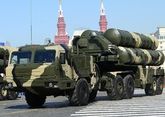Kazakhstan’s Foreign Ministry announced last week that cargo measuring 1,686 twenty-foot equivalent units, used to measure the size of a ship’s cargo, was sent from Hanoi and will pass through China, Kazakhstan and Russia before arriving in Duisburg, Germany after just 20 days. As Caspian News writes in the article Caspian Forms Key To Eurasian Shipping Route Starting In Vietnam, representatives from Kazakhstan’s national railway company Temir Zholy (KTZ) and the Kazakhstani embassy in Vietnam launched the idea in 2016.
Prior to the construction, KTZ staff visited Dong Dang and Lao Cai – two railroad crossings bordering China and Vietnam to see how profitable it would be to build a railway line linking the three Asian countries and if it would be more efficient than using maritime routes, which take between 45 – 50 days. Thanks to the rail line, goods may get from Lianyungang port to Duisburg as fast as 16 days. Railway officials from Vietnam Railways say the newly launched route will increase Vietnam’s exports to the West. Additionally, Russia and Kazakhstan can now supply agricultural products to the Vietnamese market, including meat, dairy products and other types of goods requiring quick transportation. Vietnam, for its part, now has the opportunity to export seafood and tropical fruits.
Kazakhstan and Southeast Asia are already connected through the Kazakhstani-Chinese Lianyungang terminal located in the Chinese northeastern province of Jiangsu, which is used to export Kazakhstani wheat to Vietnam. In addition, the railway line passing through the Vietnamese railway terminal in Dong Dang connects these two countries.
In 2017, Vietnam entered into a trade agreement with the Eurasian Economic Union, a trade bloc that includes Russia, Belarus, Kazakhstan, Armenia and Kyrgyzstan. In 2018, trade between Kazakhstan and Vietnam reached $467.2 million. Goods exported by Vietnam includes telephones, computers, electronic components and agricultural products such as rice, cashew nuts and pepper. Vietnam imports chemicals, ores, minerals and wheat from Kazakhstan.
The transportation and shipping sectors are viewed by Kazakhstan as a way to diversify their oil- and gas-dependent economies. Kazakhstan is currently weighing its options and possible contributions to the Chinese global infrastructure and transportation project known as the Belt and Road Initiative – a series of road, rail and maritime networks estimated to cost over $900 billion, which will increase cost effectiveness and efficiency for Eurasian trade.
The two sides already launched a special economic zone, known as the Khorgos Eastern Gate, located six kilometers away from the Altynkol border crossing between Kazakhstan and China. That allows Kazakhstan to increase its benefits from the Western Europe-Western China highway, which is the country’s longest road, measuring 8,445 km (5,247 mi). Approximately 65 trains carrying roughly 6,200 TEU per month, currently move through the Khorgos gate.









